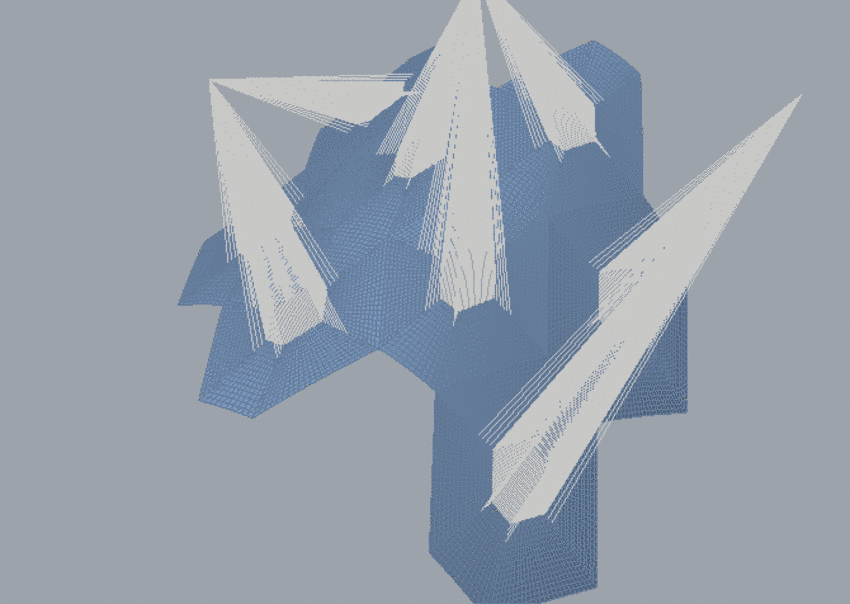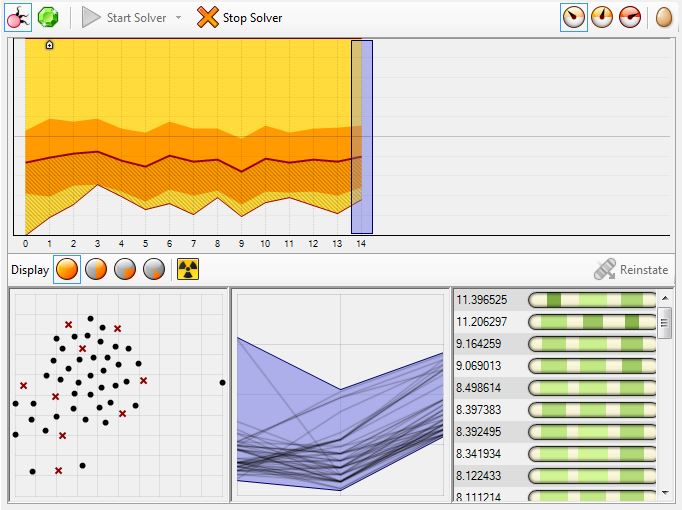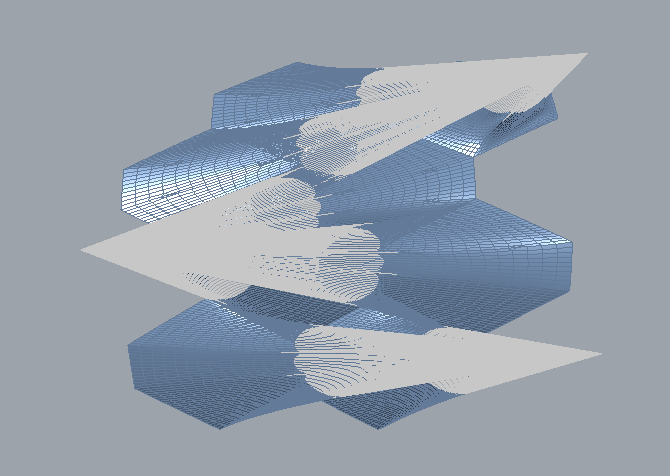Difference between revisions of "Msc1G4:Workshop14"
m |
|||
| Line 19: | Line 19: | ||
<div style="float:left; width: 120px; height 30px; border: 1px solid #aaa; margin-right:10px;" align="center">[[Msc1G4:workshop15|'''W5 ''']]</div> | <div style="float:left; width: 120px; height 30px; border: 1px solid #aaa; margin-right:10px;" align="center">[[Msc1G4:workshop15|'''W5 ''']]</div> | ||
| − | |||
| − | |||
| − | |||
| − | |||
Revision as of 09:21, 17 October 2016
Elpiza Kolo
ENVIRONMENTAL OPTIMISATION – Kangaroo + Ladybug + Galapagos
The structure of the canopy was reimagined as a set of hexagonal rigid frames held by a tensile construction. The textile is supported by three chosen points selected from a grid above the canopy. On the assumption that Foiltec PV panels are attached to the textile, the aim was to maximize the total sunlight hours in Ladybug, thus finding the alternative that generates more electricity.
The genome is defined by the sliders that select the three points from the grid of points above, used as anchor points in Kangaroo. The range of the values goes from 0 to the number of elements in each list minus 1. Initially, also the rest length of the springs stemming from the three points was entered into Galapagos, ranging from a factor of 0.35 to 0.65 of the total length. However, that relaxed the mesh too much, thus the rest length was later fixed to 0.65, letting only the anchor points move.

Initial trial with rest length as genome. Mesh is not at the desired level of tensile stretching.



